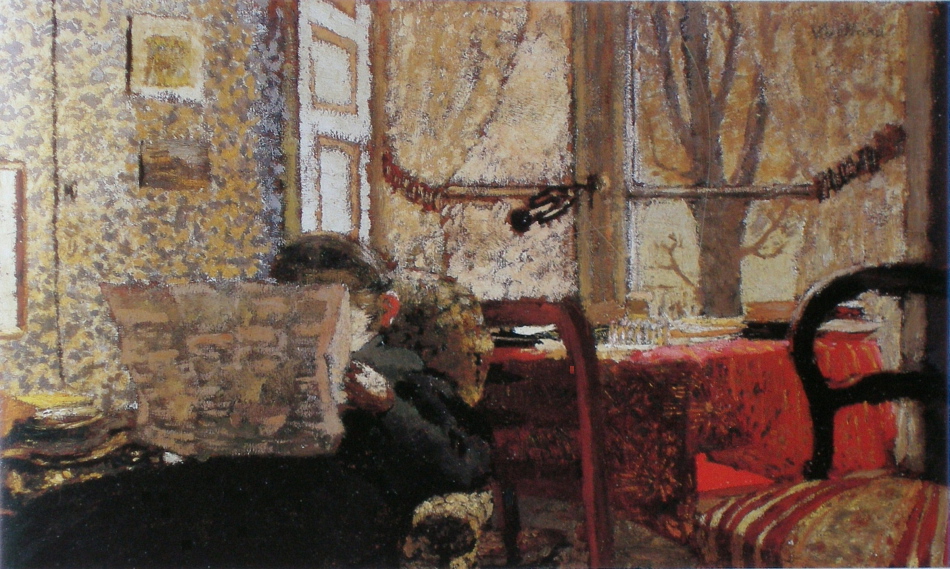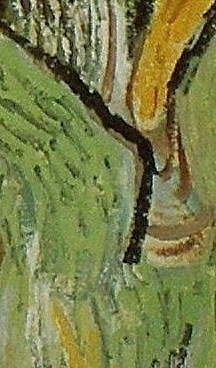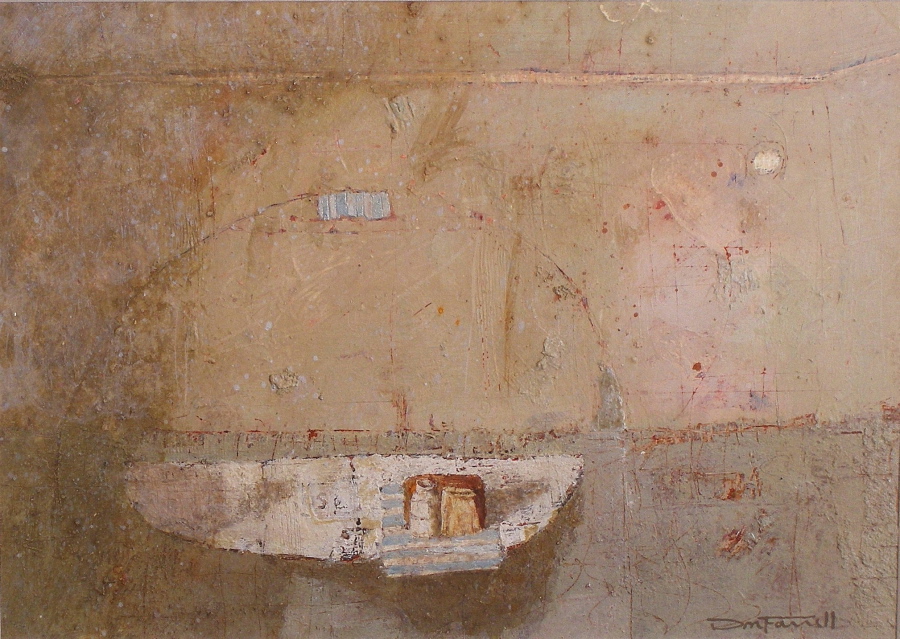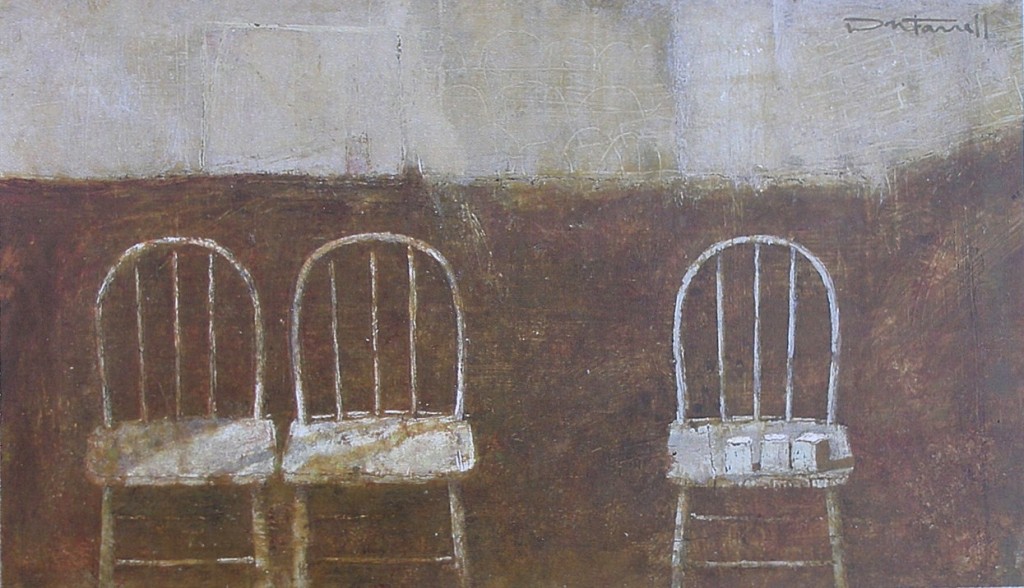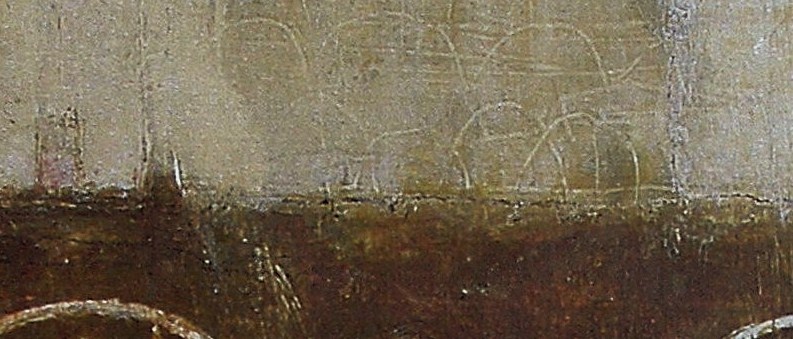This is a superb example of how masters assess their compositions. Vuillard,as Bonnard, was interested in domestic scenes, and he shows us how any subject is an opportunity to create a sophisticated painting.
He was noted for his wonderful shapes and patterns which are a great way to gain control of the subject matter. In other words not permitting the complexities of detail dictate to the artist.
In this post, however, I will focus on his thorough assessment of the composition.
I will begin with the curtain at the right and how it blends with the tree. Note how the curtain does not disrupt the rectangle of the window, which permits a rhythm of rectangles, spanning the top of the painting.
He provided a wonderful movement with parallels. The curtain tie at the right and it’s parallel projecting from the mullion. Do you feel the movement towards the figure?
There is a marvelous pull which excited me. That marvelous juicy red triangle! I love how sensitively and yet boldly he pulls me from the figure, very impressive.
Vuillard has integrated beautifully. Lets begin with the dark vertical at the right edge and how it connects to the red stripe on the chair. A more subtle one is the merging of the curtain and curved back of the chair. Also the connection of the window mullion with another chair and the very impressive integration of the shutter and the newspaper. It is very subtle. Do you feel Vulliad’s consideration of bending the bottom right of the shutter to permit the connection?
I must mention the lovely yellow pause at the left and it briefly holds you.
There is more to discover. Enjoy!

